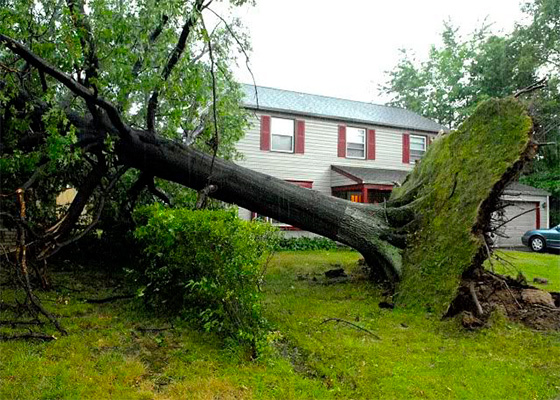Any garden can benefit with the attractiveness of a tree and give privacy to homeowners in the greater Toronto Area , however it is of importance to understand and be aware of the implications it can have on your home insurance.
TREES NEAR A BUILDING OR HOME AND INSURANCE
Insurance premiums won’t necessarily be any costlier due to a trees close proximity to a home or building nor will it complicate the process of taking out insurance.Not all insurance policies will have the proximity of a tree to a home as a criteria for a policy, but it is important to check the terms and conditions of your particular policy and find out the insurer’s position on trees.There are policies that put assumptions in place to cover damage caused by trees, be sure to look over these assumptions before taking out insurance to make sure your meet the criteria of your provider.
DANGERS POSED BY TREES ON PROPERTY
Be sure to check the wording of your insurance cover as damage to homes caused by falling trees is generally covered by insurance policies, but it’s always better to be safe than sorry. A more problematic scenario can’t be seen and it’s the roots that are growing underground that may be the problem. Homeowners sometimes miss the fat that root damage coverage can be as problematic as subsidence.When searching for the right tree insurance policy, be sure to answer honestly to the best of your knowledge if the property has ever been affected by heave, root damage, landslip or subsidence. Failure to answer honestly can lead to invalidation of your policy and any root damage history could have a severe impact on your search for the right policy.
TREE ROOT DAMAGE TO BUILDINGS
External walls, foundations can both be damaged by the roots of a tree pushing under, against or through them.For this to happen, the tree or shrub the roots belong to must be close to the house’s foundation to generate this type of physical pressure.
TREES CAUSE SUBSIDENCE
The damage caused to your home may not be due to the physical tree itself. Foundation damage is more likely to be inflicted due to type of soil, more specifically clay type soil. This clay type soil will shrink when drying and this causes the foundations to sink. This can be intensified by trees roots removing moisture from soil speeding up the drying which in the end leads to subsidence. The best form of defence is preventative, and you do this by not planting any shrubs or trees too close to a property. A good rule of thumb is to take a trees projected mature height and plant it that far away from the property. Also, research the species of tree, as some need more water than others which could also affect this process.

HEAVING
Heaving can be cause by removing a tree, a mature tree plays a big role in the soils moisture control of the area surrounding it. The waters balance is disrupted when the tree is removed, and the soil which has evolved into relying on this moisture being removed by the tree is now left with excess moisture which results in swelling.Removing a mature tree should always be advised by a professional qualified arborist to be sure not to run into this problem, this is particularly true the older the tree is.
A healthy tree whose roots are not causing any damage shouldn’t be cut down.
INSURANCE FOR TREE SUBSIDENCE,HEAVE AND ROOT DAMAGE
If you need to make a claim about subsidence, heave or root damage, your homes insurance policy should provide you with coverage.Most insurance policies as a standard offer subsidence coverage. As subsidence claims can be pricy, they normally will send out an adjuster to properly asses the claim and cause of the incident.However if they instruct you to remove a healthy tree that is in noway a problem as a precautionary measure and you don’t, you may be held accountable for any cost due to future damage.Insurers normally won’t ask for a tree to be removed unless there is reason to believe it will cause damage, if you disagree, you should come to an agreement through dialogue before hand.
SHARED TREES ON PROPERTY
If you share a tree with a neighbour and have some concerns, you should firstly have a friendly chat with your neighbour. If it’s isn’t possible, you should establish what your legal position is, or come to an agreement and share the cost of any removal.Also, when you are planting any tree close to a neighbour, you should take their property and home into consideration as if any roots from your trees affect their home you may be liable for the damage.Most policies will cover third-party damage as a norm, but anything over you’ll need to pay the difference and your premium may increase when you renew your policy.

